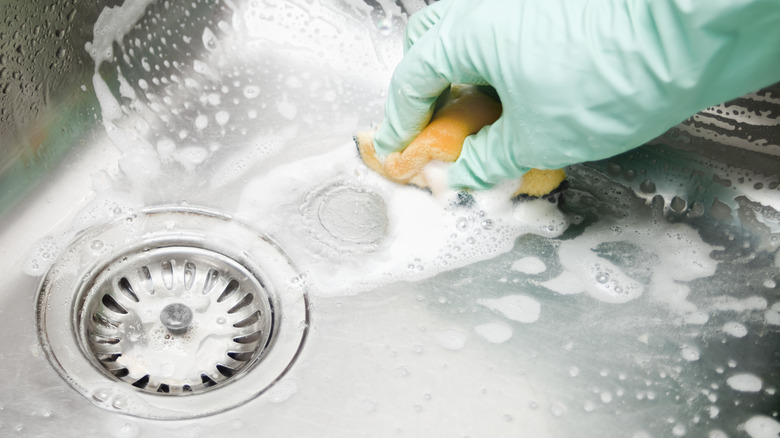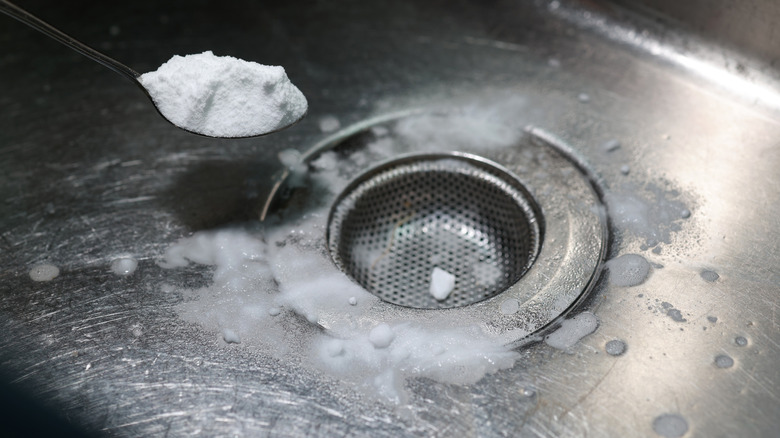Keep Your Kitchen Sink Sparkling Clean With One Baking Staple
Did you realize that the kitchen sink is the perfect breeding ground for bacteria? Bacteria, particularly E. coli, survive on food particles on dishes and in the drain; plus, they live and grow in moist environments. That's why it's so important to clean your kitchen sink regularly, and there's one baking staple that works well: baking soda.
You've probably heard before that baking soda (sodium bicarbonate) is for more than making quick breads, biscuits, cookies, and muffins. In fact, not using it to clean your kitchen sink is a baking soda mistake everyone makes, and it's particularly useful for getting a streak-free clean on stainless steel sinks. One reason is that some strains of bacteria, including E. coli, are sensitive to the powdery substance. While researchers don't completely understand why, they believe that it's related to baking soda being alkaline and changing the environmental pH. Similarly, it can neutralize bad smells that are produced by bacteria-generated organic acids.
Another reason baking soda works well as a kitchen sink cleaner is that its alkaline nature reacts with the fats in grease. Basically, this saponification process chemically modifies some parts of grime and muck, creating a soapy, goopy substance that's easy to wash away. That's why many grease cleaners include sodium bicarbonate as an ingredient. On top of that, baking soda has an abrasive texture without being too harsh on surfaces, which is why it's often used in toothpaste.
How to use baking soda to clean your kitchen sink
While you've likely seen recommendations for combining baking soda with vinegar to clean surfaces, this so-called hack is actually bogus. This mixture creates a foaming reaction that looks like it has cleaning properties, but it's just the result of mixing a base with an acid, which cancel each other out. Instead, it's possible to get your kitchen sink sparkling clean with just baking soda and a damp sponge or microfiber cloth.
Simply spread a generous amount of the powdery substance all around the sink, and scrub all around with the damp sponge. It's recommended that you start from the top of the sides and work your way down to the drain. The water from the sponge and the baking soda will start to form a paste that will not only clean but also polish your sink as you scrub. Also, you can let the paste sit for a while before rinsing and wiping the area basin.
If you still see some limescale spots afterward, that's because limescale is also a base, so baking soda won't be as effective. In this case, scrubbing with a ball of aluminum foil is your secret for a sparkling kitchen sink because it can help remove limescale and stains.

